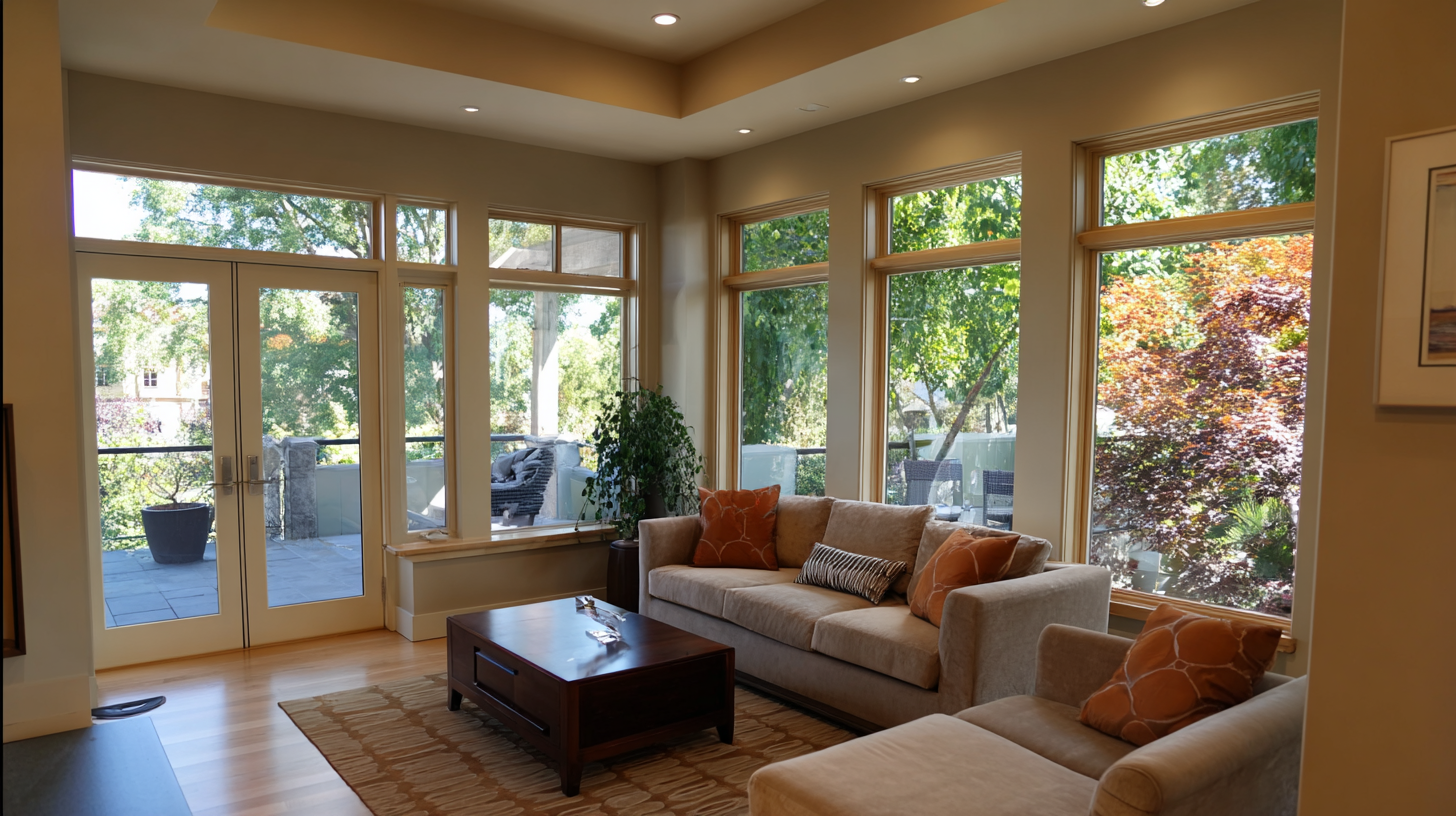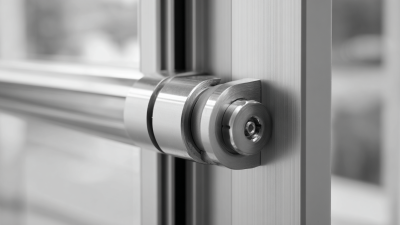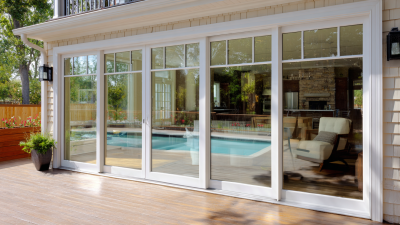NEWS at Quanex
See the latest news, posts and events from Quanex about our business, the industry, our people and more.
Why Choosing the Right Window Systems Can Transform Your Home’s Energy Efficiency
 Choosing the right window systems is essential for enhancing your home's energy efficiency, a critical factor in both comfort and cost savings. According to the U.S. Department of Energy, up to 30% of a home's heating and cooling energy can be lost through its windows. This staggering statistic underscores the importance of selecting energy-efficient window systems that can significantly reduce energy bills and improve indoor comfort. Modern window technologies, such as double or triple glazing, low-E coatings, and energy frames, can contribute to reductions in energy consumption by as much as 40%. Moreover, the Energy Star program reports that homes equipped with such advanced window systems can achieve considerable savings, potentially resulting in thousands of dollars over their lifespan. By investing in the right window systems, homeowners not only enhance their property’s value but also take a substantial step towards sustainability.
Choosing the right window systems is essential for enhancing your home's energy efficiency, a critical factor in both comfort and cost savings. According to the U.S. Department of Energy, up to 30% of a home's heating and cooling energy can be lost through its windows. This staggering statistic underscores the importance of selecting energy-efficient window systems that can significantly reduce energy bills and improve indoor comfort. Modern window technologies, such as double or triple glazing, low-E coatings, and energy frames, can contribute to reductions in energy consumption by as much as 40%. Moreover, the Energy Star program reports that homes equipped with such advanced window systems can achieve considerable savings, potentially resulting in thousands of dollars over their lifespan. By investing in the right window systems, homeowners not only enhance their property’s value but also take a substantial step towards sustainability.
Choosing Energy-Efficient Window Systems: Key Features to Consider
When selecting window systems for your home, focusing on energy efficiency can significantly improve your living environment and reduce energy bills. Key features to consider include the window frame material, glass type, and insulation properties. Frames made from materials like vinyl, fiberglass, or wood offer varying levels of thermal performance, impacting heat loss or gain throughout the seasons. Double or triple-pane glass with low-emissivity (Low-E) coatings can also enhance insulation, reflecting heat back into your home during winter and keeping it out during summer.
Tips: When choosing window systems, look for the Energy Star label to ensure you're selecting products that meet strict energy efficiency guidelines. Additionally, consider the solar heat gain coefficient (SHGC) of the glass; lower values indicate less solar heat entering your home, which can be particularly beneficial in warmer climates. Finally, professional installation can make a significant difference—improperly installed windows can lead to air leaks and decreased energy efficiency, negating the benefits of an energy-efficient product.
The Impact of Window Materials on Home Energy Efficiency
The choice of window materials plays a critical role in determining a home's overall energy efficiency. According to the U.S. Department of Energy, windows can account for up to 25-30% of residential heating and cooling energy use. This means that selecting the right materials can significantly reduce energy consumption and lower utility bills. For instance, vinyl and fiberglass frames tend to offer better insulation properties compared to traditional wood frames, aiding in temperature regulation throughout the year.
In addition, the type of glass used in windows also affects energy performance. Low-emissivity (Low-E) glass, which has a special coating to reflect heat, can reduce heat transfer by up to 50%. The National Renewable Energy Laboratory reports that homes equipped with energy-efficient windows can see a reduction in energy costs by as much as 15%. By investing in high-quality window systems made from energy-efficient materials, homeowners not only enhance comfort but can also contribute to a more sustainable environment.
Impact of Window Materials on Home Energy Efficiency
Understanding Window Ratings: What Do They Mean for Your Home?
When selecting window systems for your home, understanding window ratings is essential to improving energy efficiency. Window ratings typically cover aspects like U-factor, Solar Heat Gain Coefficient (SHGC), and Visible Transmittance (VT). According to the US Department of Energy, a lower U-factor indicates better insulation, making it crucial for reducing heating costs in colder climates. For instance, windows with a U-factor of 0.30 or lower are recommended for optimal performance in many regions.
Additionally, the SHGC measures how much solar heat passes through the window, impacting cooling costs. Choosing windows with a SHGC of 0.25 or lower can significantly mitigate heat gain during summer months. Meanwhile, making an informed choice regarding VT can enhance natural lighting, further reducing reliance on artificial light.
**Tips:** When shopping for windows, always look for the ENERGY STAR label, which signifies compliance with energy efficiency standards. Consider scheduling a professional energy audit to accurately assess your home’s specific needs. Lastly, remember that regional climate plays a significant role in determining the best window ratings for your situation, so consult local building codes and guidelines.

Cost vs. Savings: Analyzing the Long-Term Benefits of Upgrading Windows
Upgrading windows can seem like a daunting investment, yet the long-term savings often outweigh initial costs. Modern window systems are designed with energy efficiency in mind, featuring high-performance glazing and advanced insulation techniques that significantly reduce heat loss during winter and heat gain in summer. By minimizing energy transfer, homeowners can reduce reliance on heating and cooling systems, leading to decreased energy bills over time.
When evaluating the cost versus savings of new window systems, it's essential to consider not only the immediate financial implications but also the potential for increased home value. Energy-efficient windows enhance the comfort of living spaces and can even qualify homeowners for tax credits or rebates. Additionally, as utility costs continue to rise, investing in high-quality windows now may protect against future expenses. Ultimately, the decision to upgrade is not just about the present cost but about long-term benefits, making it a wise choice for any homeowner looking to improve their home’s energy efficiency.
Why Choosing the Right Window Systems Can Transform Your Home’s Energy Efficiency - Cost vs. Savings: Analyzing the Long-Term Benefits of Upgrading Windows
| Window Type | Initial Cost ($) | Average Lifespan (years) | Annual Energy Savings ($) | Total Savings Over 20 Years ($) |
|---|---|---|---|---|
| Single Pane | 150 | 10 | 50 | 0 |
| Double Pane | 300 | 20 | 100 | 1,000 |
| Low-E Glass | 400 | 25 | 150 | 3,750 |
| Triple Pane | 600 | 30 | 200 | 6,000 |
| Smart Windows | 800 | 30 | 300 | 9,000 |
Top Window Systems to Enhance Home Energy Performance in 2023
 Choosing the right window systems can significantly enhance your home's energy performance in 2023. With new technologies and materials available, homeowners have access to options that not only improve energy efficiency but also elevate aesthetic appeal. Among the top window systems are triple-glazed windows, which offer superior insulation compared to traditional options. These windows reduce heat transfer, making your home warmer in winter and cooler in summer, ultimately lowering your energy bills.
Choosing the right window systems can significantly enhance your home's energy performance in 2023. With new technologies and materials available, homeowners have access to options that not only improve energy efficiency but also elevate aesthetic appeal. Among the top window systems are triple-glazed windows, which offer superior insulation compared to traditional options. These windows reduce heat transfer, making your home warmer in winter and cooler in summer, ultimately lowering your energy bills.
Tips: When selecting new windows, consider the U-value, which measures thermal performance. A lower U-value indicates better insulation. Additionally, look for windows with low-emissivity (Low-E) glass, which reflects heat back into your home during cold months and helps to keep it cool in warmer seasons. Proper installation is equally critical; even the best windows can underperform if not installed correctly.
Another excellent option is vinyl windows, known for their durability and low maintenance requirements. They come in various styles, allowing homeowners to choose designs that fit their architectural vision while maximizing energy efficiency. Look for windows that are Energy Star certified, ensuring they meet strict energy performance guidelines, providing further assurance of their effectiveness in enhancing your home’s energy efficiency.



